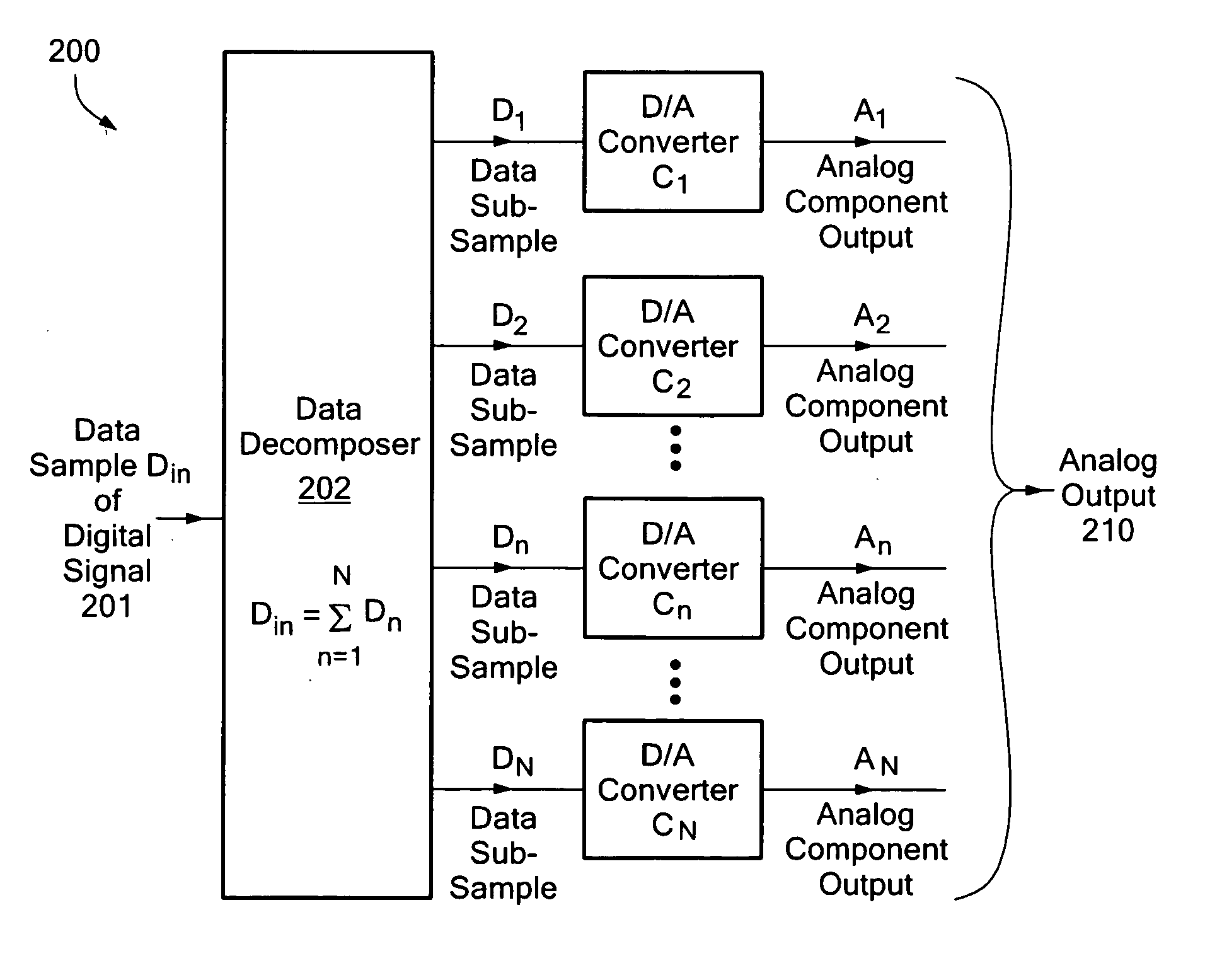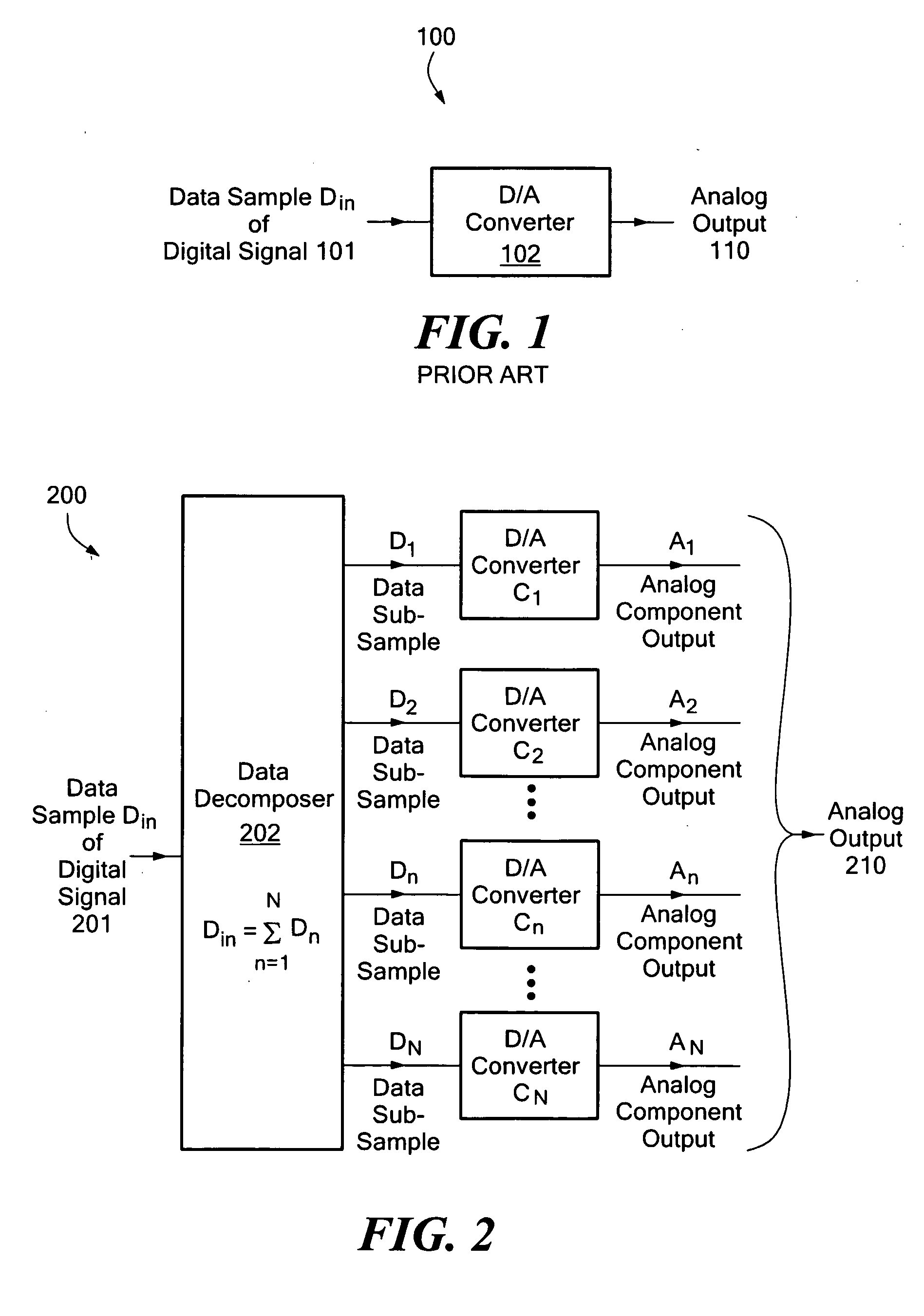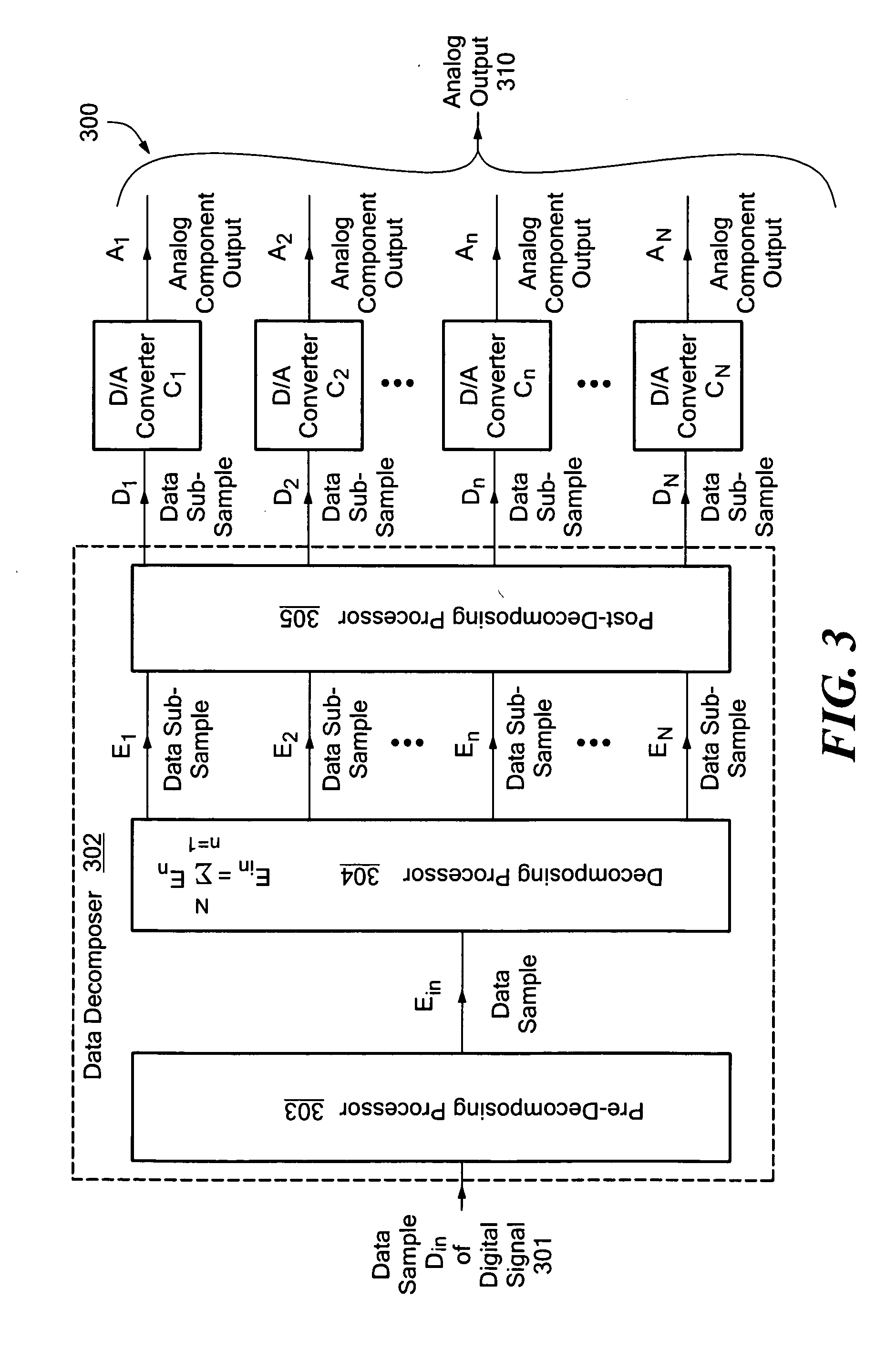Multi-channel digital to analog (D/A) conversion
- Summary
- Abstract
- Description
- Claims
- Application Information
AI Technical Summary
Benefits of technology
Problems solved by technology
Method used
Image
Examples
Embodiment Construction
[0039] The disclosures of U.S. Provisional Patent Application No. 60 / 693,071 filed Jun. 23, 2005 entitled MULTI-CHANNEL PULSE WIDTH MODULATION IN DIGITAL SYSTEM, U.S. Provisional Patent Application No. 60 / 700,724 filed Jul. 20, 2005 entitled MULTI-CHANNEL DIGITAL TO ANALOG (D / A) CONVERSION, and U.S. , Provisional Patent Application No. 60 / 741,066 filed Dec. 1, 2005 entitled MULTI-CHANNEL DIGITAL TO ANALOG (D / A) CONVERSION are incorporated herein by reference in their entirety.
[0040] A multi-channel digital-to-analog (D / A) conversion system and method is disclosed that can produce an analog output from a digital signal with better resolution and dynamic range than conventional single channel D / A conversion systems. The presently disclosed multi-channel D / A conversion system can achieve the resolution of the digital signal using D / A converters that have a resolution that is less than the resolution of the digital signal. In one mode of operation, the disclosed multi-channel D / A conve...
PUM
 Login to View More
Login to View More Abstract
Description
Claims
Application Information
 Login to View More
Login to View More - R&D
- Intellectual Property
- Life Sciences
- Materials
- Tech Scout
- Unparalleled Data Quality
- Higher Quality Content
- 60% Fewer Hallucinations
Browse by: Latest US Patents, China's latest patents, Technical Efficacy Thesaurus, Application Domain, Technology Topic, Popular Technical Reports.
© 2025 PatSnap. All rights reserved.Legal|Privacy policy|Modern Slavery Act Transparency Statement|Sitemap|About US| Contact US: help@patsnap.com



